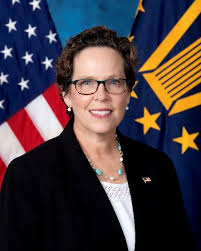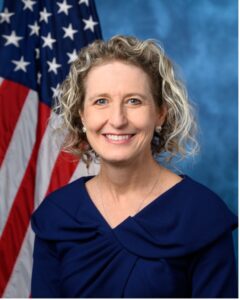WASHINGTON, DC — Lawmakers are seeking answers to how quality control issues could manifest and then linger at the Hampton, VA, VAMC for years without VISN leaders being aware of them. Only in the last six months have there been substantive changes in leadership at the Virginia facility, including the replacement of the medical center director.
“In March 2024, my district office in Virginia Beach began to hear concerning reports from whistleblowers about the Hampton VA, particularly the facility’s leadership and surgical services department,” explained Rep. Jen Kiggans (R-VA), chair of the House VA Oversight Subcommittee at a hearing on the issue. “Whistleblowers described the facility as a repository for well-founded patient safety and hostile work environment complaints. … [They] reported how, instead of investigating the patient care concerns that were brought forward, VA leadership would retaliate against those who reported the concerns. Whistleblowers allege that, because of this environment, Hampton VA has a critically low number of clinical staff. For example, Hampton VA has only one full-time anesthesiologist. This significantly limits the number of surgeries at the facility, which forces patients needing emergency care to be transferred to other facilities.”
Kiggans said she was alarmed when the VA Office of the Inspector General (OIG) testified in September that the VISN 6 leadership was unaware of the extent of the problems at the Hampton, VA.
“Such lack of VISN oversight is especially alarming, given that the OIG has published multiple reports, beginning in 2022, detailing Hampton VA’s leadership failures,” she said.
Those OIG reports highlighted serious deficiencies at Hampton. The first two reported on failures of care coordination, one with prostate cancer and one with lung cancer. The OIG uncovered that the facility lacked basic elements of a cancer care program, namely a cancer care committee, a tumor board and a cancer registrar. The third report examined deficiencies in Hampton’s patient safety program.
“The facility made numerous errors when conducting reviews of poor surgical outcomes,” testified Jennifer Baptiste, MD, assistant IG for healthcare operations. “Clinical-care reviews were not conducted according to policy to ensure accuracy and fairness [and] were not reported back to the medical executive committee that has responsibility to make recommendations over privileging actions.”

Jennifer Baptiste, MD, Assistant IG for Healthcare Operations
When Hampton leaders attempted to revoke surgical capabilities for a provider, the incorrect processes were followed, resulting in the failure to rescind privileges, as well as a year-long delay in reporting the provider to the state licensing board.
Common themes in all three reports included: lack of care coordination; leadership that was disengaged or lacked awareness of these fundamental quality review processes; and deficiencies in the process by which facility makes institutional disclosures, resulting in elements being missing from information shared with veterans and their family members.
Baptiste noted that OIG has seen similar scenarios play out at other VA facilities.
“This highlights the impact of passive oversight by VISN leaders and staff,” she said. “While VA facility leaders are encouraged to reach out to VISN for support when they determine a need, the current structure does not mandate an active role for VISNs in supporting medical centers.”
Unlike at other facilities, Hampton leadership seemed particularly unaware of the problems the reports highlighted, according to the testimony.
“Often when we go into a facility, we do find that the facility leadership is already aware and is working on it, but in [a couple of the Hampton reports], facility leadership was not aware, because staff hadn’t entered those patient safety reports,” Baptiste told legislators. “In another instance, the quality manager was not initiating peer reviews in a timely fashion. And in the third case, while the facility had started some of those quality reviews of the surgeon’s care, the reviews weren’t being conducted correctly, so they were really ineffective.”
In July, along with the medical center director being reassigned, Hampton’s chief of surgical service stepped down and its chief of staff resigned. VISN leaders are working with new hospital leadership to address the several issues uncovered and noted in the OIG reports, as well as ones that whistleblowers passed on to Kiggan’s office.
“As soon as we became aware of the information that got to the OIG, we were very active in looking at the processes,” explained VISN 6 Director Paul Crews. “We increased the number of oversight visits that we conducted, where my chief medical officer team and quality team spent many days with the facility looking through their processes and helping coach them through the corrective action. We found many ineffective, inefficient and inconsistent processes that we have to address.”
As for the shortage of anesthesiologists and the impact on the hospital’s surgical capacity, Crews said that, in addition to increasing recruitment efforts, they have identified a chief of anesthesiology to help rebuild the service line and will be working to bring in anesthesiologists from other facilities in VISN 6 to provide coverage.
According to Baptiste, Crews and his team have their work cut out for them.
“It’ll take time for VISN leadership to regain the trust of facility staff,” she said. “Encouraging safety and empowering staff to take responsibility for their roles is what the new leadership is going to have to take on.”


